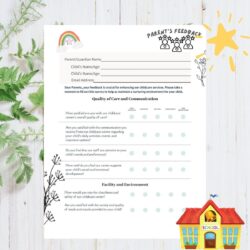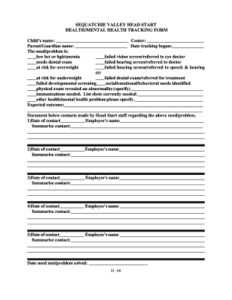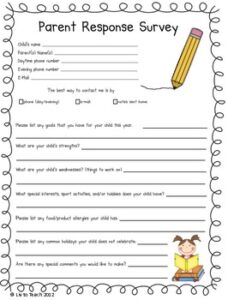Navigating the world of Individualized Education Programs (IEPs) can feel overwhelming, especially when it comes to documenting progress towards goals. Are you a special education teacher, a parent of a child with an IEP, or perhaps a related service provider? If so, you understand the critical role that well-documented IEP goals play in ensuring a student’s success. Clear, concise, and consistent documentation is the cornerstone of effective IEP implementation and helps track progress, identify areas needing adjustments, and facilitate meaningful communication between all stakeholders involved.
The challenge often lies in finding a system that is both efficient and comprehensive. Juggling lesson planning, student assessments, parent communication, and the myriad of other responsibilities that come with working with students with diverse learning needs leaves little time for meticulously crafting documentation. This is where an IEP goal documentation template can be an invaluable asset. It provides a structured framework for recording observations, tracking data, and ultimately demonstrating the impact of interventions on student growth.
Think of an IEP goal documentation template as your secret weapon in the IEP process. It empowers you to stay organized, demonstrate accountability, and advocate effectively for your students. Whether you prefer a digital spreadsheet, a customizable word document, or a dedicated online platform, the right template can streamline your workflow and free up valuable time to focus on what truly matters: supporting your students’ unique learning journeys.
Why Accurate IEP Goal Documentation Matters
Accurate and thorough documentation of IEP goals is more than just a bureaucratic requirement; it’s the foundation upon which effective special education services are built. It serves as a critical communication tool, providing a shared understanding of a student’s progress among teachers, parents, administrators, and related service providers. Imagine trying to build a house without blueprints – that’s essentially what implementing an IEP without proper documentation is like. You’re working in the dark, without a clear understanding of whether your efforts are yielding the desired results.
Firstly, consider the legal implications. IEPs are legally binding documents, and accurate documentation is essential for demonstrating compliance with federal and state regulations. In the event of a disagreement or a request for due process, meticulous records can provide crucial evidence to support the services being provided and the student’s progress toward their goals. This protects both the student’s rights to a free and appropriate public education (FAPE) and the school district’s accountability.
Secondly, detailed documentation allows for data-driven decision-making. By consistently tracking student performance, educators can identify patterns, trends, and areas where interventions may need to be adjusted or modified. This iterative process ensures that the IEP remains responsive to the student’s evolving needs and maximizes their potential for success. For instance, if a student is consistently struggling with a particular aspect of a math goal, the data will clearly highlight this, prompting the team to explore alternative teaching strategies or provide additional support.
Furthermore, comprehensive documentation facilitates meaningful parent involvement. When parents have access to clear and concise information about their child’s progress, they are better equipped to participate in the IEP process and advocate for their child’s needs. Regular updates, shared data, and opportunities for collaborative discussions foster a strong partnership between home and school, which is essential for student success. Parents can also implement strategies at home that reinforce skills learned in the classroom, further accelerating progress.
Finally, let’s not forget the positive impact on the student. Seeing their progress documented, even in small increments, can be incredibly motivating for students. It helps them understand their strengths and weaknesses, set realistic goals, and develop a sense of ownership over their learning. Regular feedback and positive reinforcement, documented and shared with the student, can significantly boost their confidence and self-esteem.
Essential Elements of an Effective IEP Goal Documentation Template
Now that we’ve established the importance of documentation, let’s delve into the key elements that make an IEP goal documentation template truly effective. A well-designed template should be user-friendly, comprehensive, and adaptable to the individual needs of each student. It should also be easily shareable and accessible to all members of the IEP team.
First and foremost, the template should clearly identify the specific IEP goal being addressed. This includes the measurable objective, the criteria for success, and the methods used to assess progress. Avoid vague or ambiguous language; instead, use precise and quantifiable terms. For example, instead of stating “Student will improve reading comprehension,” specify “Student will answer comprehension questions with 80% accuracy on grade-level reading passages.”
Secondly, the template should provide a structured format for recording data. This could include daily, weekly, or monthly progress notes, depending on the nature of the goal and the frequency of assessment. The data should be objective and based on observable behaviors or measurable outcomes. Examples of data collection methods include frequency counts, duration recordings, task analyses, and work samples. Consistency in data collection is crucial for accurate progress monitoring.
Another essential element is a section for documenting interventions and strategies used to support the student in achieving the goal. This includes specific teaching methods, accommodations, modifications, and assistive technology. It’s important to note which interventions were successful and which were not, as this information can inform future instructional decisions. This section should also include details about the fidelity of implementation – whether the interventions were implemented as intended.
Furthermore, the template should include space for noting any factors that may be impacting the student’s progress, such as attendance issues, medical concerns, or changes in the home environment. These factors can provide valuable context for interpreting the data and understanding any fluctuations in performance. This is where anecdotal records of observations come in handy.
Finally, a good IEP goal documentation template should facilitate communication among the IEP team. This could involve providing a space for comments, questions, and suggestions from teachers, parents, and related service providers. Regular communication and collaboration are essential for ensuring that the IEP is implemented effectively and that the student receives the support they need to succeed. The completed IEP goal documentation template serves as the documentation showing the implementation.
Ultimately, think of the template as a living document that evolves alongside the student’s progress. Regular review and adjustments are essential to ensure that the IEP remains relevant and responsive to the student’s changing needs.
Remember, the goal isn’t just to fill out a form. It is to provide a clear and accurate picture of the student’s journey, allowing all involved to collaboratively guide them toward success. An IEP goal documentation template can be an incredibly useful tool to ensure compliance and make that journey easier.



